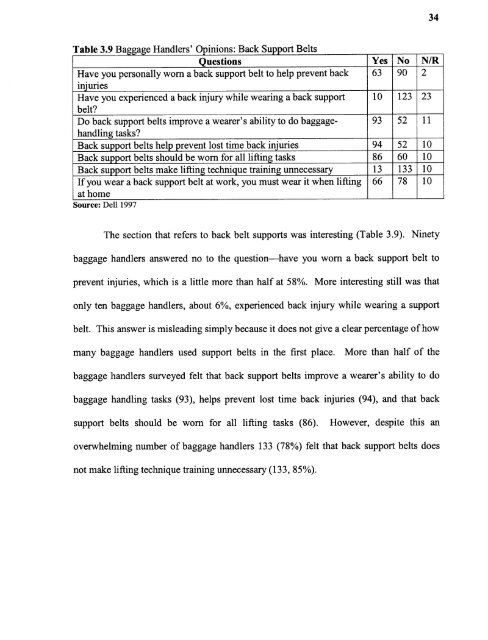An ergonomic assessment of the airline baggage handler
An ergonomic assessment of the airline baggage handler
An ergonomic assessment of the airline baggage handler
Create successful ePaper yourself
Turn your PDF publications into a flip-book with our unique Google optimized e-Paper software.
34The section that refers to back belt supports was interesting (Table 3.9). Ninety<strong>baggage</strong> <strong>handler</strong>s answered no to <strong>the</strong> question—have you worn a back support belt toprevent injuries, which is a little more than half at 58%. More interesting still was thatonly ten <strong>baggage</strong> <strong>handler</strong>s, about 6%, experienced back injury while wearing a supportbelt. This answer is misleading simply because it does not give a clear percentage <strong>of</strong> howmany <strong>baggage</strong> <strong>handler</strong>s used support belts in <strong>the</strong> first place. More than half <strong>of</strong> <strong>the</strong><strong>baggage</strong> <strong>handler</strong>s surveyed felt that back support belts improve a wearer's ability to do<strong>baggage</strong> handling tasks (93), helps prevent lost time back injuries (94), and that backsupport belts should be worn for all lifting tasks (86). However, despite this anoverwhelming number <strong>of</strong> <strong>baggage</strong> <strong>handler</strong>s 133 (78%) felt that back support belts doesnot make lifting technique training unnecessary (133, 85%).
















